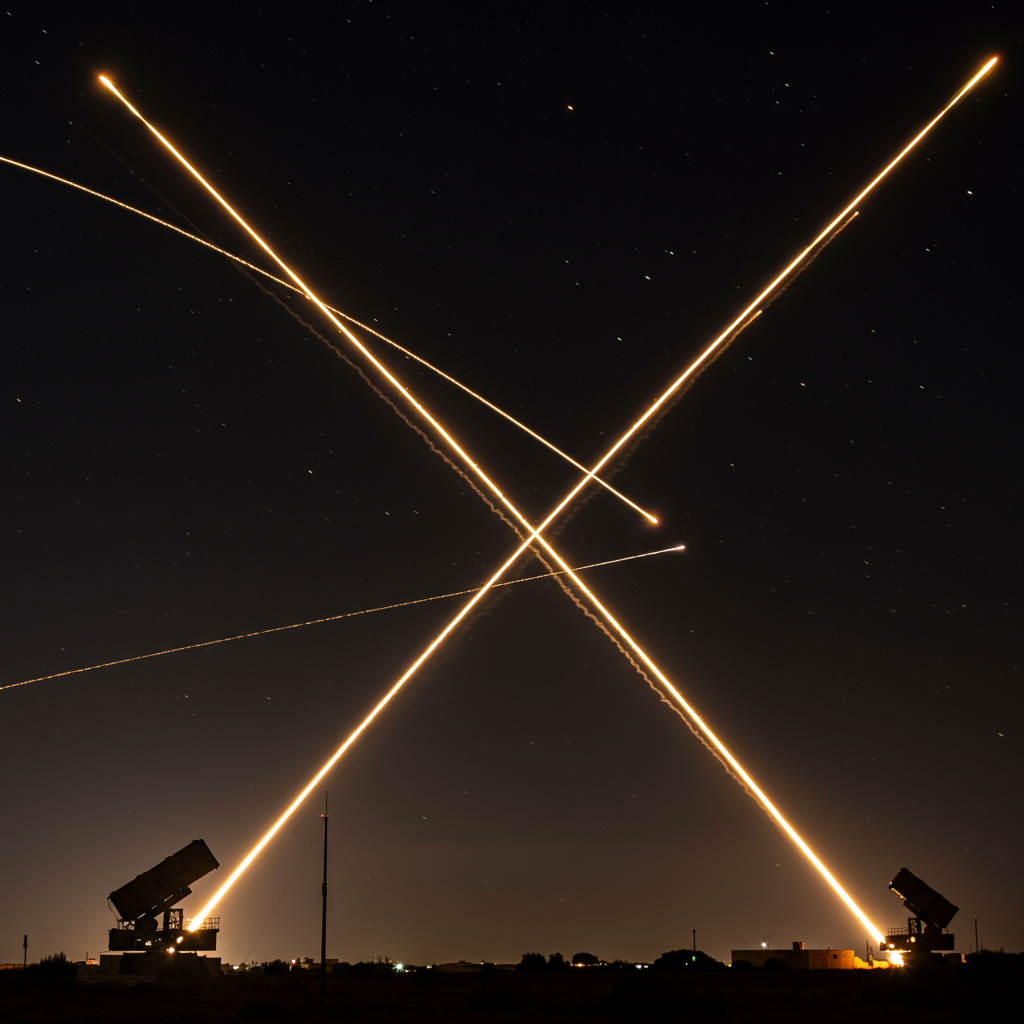Recent escalations between Iran and Israel have brought the military capabilities of both nations into sharp focus, particularly Iran’s extensive missile arsenal and Israel’s vaunted multi-layered air defense system. While Israel has claimed significant success in degrading Iran’s air defenses (systems designed to counter aircraft), the threat posed by Iranian missiles remains potent and complex.
Iran’s Growing Missile Power
Iran is estimated to possess the largest ballistic missile arsenal in the Middle East, potentially exceeding 3,000 units. Crucially, a significant portion of these, perhaps around 2,000, are believed to have the range necessary to reach Israel (over 1,000 km). Notable medium-range ballistic missiles include the Sejil (claimed range 2,500 km, speeds over 17,000 km/h), the Kheibar (2,000 km range), and the Haj Qasem (1,400 km range).
Beyond ballistic missiles, Iran also fields cruise missiles and a substantial number of drones capable of regional strikes. There are reports that Iran is accelerating production, potentially aiming for a significant increase in its missile stock over the coming years, drawing on designs and assistance from countries like North Korea, Russia, and China.
A new and particularly concerning development is Iran’s claimed deployment of the Fattah-1 hypersonic missile. Hypersonic missiles travel at speeds exceeding Mach 5 (five times the speed of sound) and are highly maneuverable, making them exceedingly difficult for even advanced defense systems to track and intercept. Iran has reportedly used these in recent attacks, presenting a significant challenge to Israel’s defenses. Swarms of drones are also employed to complicate interception efforts.
Israel’s Multi-Layered Air Defense System
Israel has developed a sophisticated, multi-layered air defense system designed to counter a variety of aerial threats, from short-range rockets to long-range ballistic missiles. This system is built on several tiers, each targeting different threats at varying altitudes and ranges:
Iron Dome: The lowest layer, specifically designed to intercept short-range rockets (like those from Gaza or southern Lebanon) and artillery shells, typically within a range of 70 km. It is primarily aimed at protecting civilian populations.
David’s Sling: The middle layer handles medium-range ballistic missiles and cruise missiles launched from distances of 100 to 200 km.
- Arrow System (Arrow 2 and Arrow 3): The upper layer provides long-range defense against ballistic missiles. Arrow 2 intercepts missiles in the upper atmosphere (around 50 km altitude, 100 km radius), while the more advanced Arrow 3 is designed to intercept threats in space (potentially up to 2,400 km distance). Both Arrow systems use “hit-to-kill” technology.
- www.euronews.com
- www.npr.org
- time.com
- www.aljazeera.com
- www.newsweek.com
These systems rely on interceptor missiles to destroy incoming threats. While Israeli officials have claimed high success rates (ranging from 80% to 90% on certain occasions), no system is impenetrable.
The Challenge of Saturation and Cost
Iran’s strategy appears to include using large-scale missile and drone barrages designed to overwhelm Israel’s defenses. While many incoming threats are intercepted, the sheer volume can lead to some penetrating the shield, causing damage and casualties.
A critical factor in this dynamic is the cost and supply of interceptors. Missiles like the Arrow are expensive and complex to produce in mass quantities. Intense barrages can quickly deplete stockpiles. Reports indicate Israel has faced a significant shortage in its supply of Arrow interceptors, a situation known to the US for months. This raises concerns about sustained defense capacity against high-intensity, long-range attacks, especially when facing advanced threats like hypersonics.
Beyond Defense: Offense and Impact
Israel also possesses its own advanced offensive capabilities, including long-range ballistic missiles (like the Jericho series, some potentially nuclear-capable) for deterrence, precision missiles, and a modern air force equipped with aircraft like F-35 stealth fighters. Israel has conducted strikes targeting Iranian military facilities, weapons factories, centrifuge plants, and attempting to destroy mobile ballistic missile launchers, which are difficult to find and hit due to their mobility and Iran’s vast, mountainous terrain.
Despite Israel’s military assertions, the recent barrages from Iran have had a profound impact on Israeli cities and civilians. Attacks have struck strategic sites like the Weizmann Institute and military headquarters in Tel Aviv, but also residential buildings and civilian infrastructure, resulting in fatalities and widespread damage. The unprecedented intensity and reach of these attacks have forced Israelis across the country to seek shelter, testing communal safe rooms and highlighting a sense of vulnerability previously less felt in major cities.
In conclusion, the military confrontation between Iran and Israel involves a complex interplay between Iran’s substantial and evolving missile arsenal, including emerging hypersonic capabilities, and Israel’s sophisticated but costly and potentially strained multi-layered missile defense system. While Israel has demonstrated offensive capabilities and claimed air superiority, Iran’s missile power remains a significant threat capable of penetrating defenses and causing real-world damage and psychological impact.




